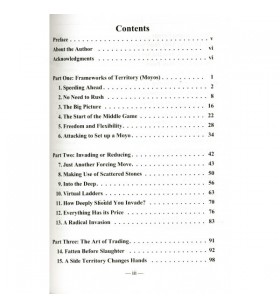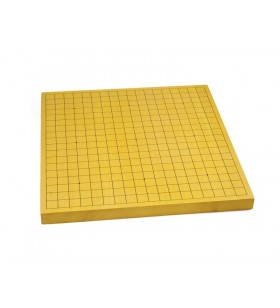- CHESS
- Chess boards and pieces
- Chess books
- Chess books in English and others
- Opening books
- The Ruy Lopez
- Other open games
- Other semi-open games
- The Sicilian
- French Defence
- Pirc & Modern Defence
- Caro-Kann
- Queen´s Gambit
- Slav Defence & Semi-Slav
- Other closed games
- Other semi-closed games
- King´s Indian Defence
- Nimzo & Queen´s Indian
- Grünfeld
- English Opening
- Dutch Defence
- Miscellaneous openings
- General and repertoire books
- Endgame books
- Books on grandmasters
- Books on tournaments
- Miscellaneous
- General and middle game books
- Opening books
- Chess books in French language
- Chess books in English and others
- Chess software and DVDs
- Chess computers
- Equipment for clubs
- BOARD & BRAIN GAMES
- GO
- BRIDGE & CARDS & TAROT
- POKER & CASINO GAMES
- PUZZLES & BRAIN TEASERS
- DARTS
Junfu Dai et Noguchi Motoki - Yose Fins de partie au jeu de go
 Livraison sous 48 heures via Bpost*
Livraison sous 48 heures via Bpost*
Livraison gratuite à partir de €69 (Belgique, France, Pays-Bas, Luxembourg, Allemagne)
 You can cancel your order
You can cancel your order
For fourteen days!
 Secure payments
Secure payments
All payment cards accepted.
16 other product
NOGUCHI - Le langage des pierres
Ensemble de compétition
Cet ensemble se compose d'un goban en bois 19 x 19 verso 13 x 13. Les pierres en pâte de verre coréennes sont livrées dans des bols en plastique.
Star Point Joseki, 232 p.
Pierres en pâte de verre petite taille
Ces petites pierres (diamètre 20,5 mm, épaisseur 6,5 mm) sont plutôt conçues pour les débutants. Elles sont présentées en boîtes plastique au lieu des traditionnelles boîtes en carton.
Goban en bois vendu séparément.
Bols de go en bois
Bols de go en bois (finition mat) pour des pierres jusqu'à 8,5 mm d'épaisseur.
Customers who bought this product also bought:
Pierres en plastique
Des pierres en plastique régulières et sans ébarbures. Goban en bois vendu séparément.
Noguchi - L'usage de la force
L'éditeur Praxéo qui s'est spécialisé dans l'édition de livres d'initiation et de perfectionnement des jeux de stratégie asiatiques notamment, nous propose un nouvel opus sur le jeu de go, L'Usage de la Force, voici ci-dessous, le message de l'auteur Motoki Noguchi, 7-dan et quintuple champion de France
La force, essence du go, critère absolu de direction de jeu, révélée et déclinée par deux proverbes connus de tous : « Un coup urgent avant un gros coup » et « Jouer loin de la force ».
Dans ce cinquième opus, nous faisons de nouveau appel à Sensei et Ludo qui vous ont accompagnés dans Le langage des pierres et Tsumego. Ludo a progressé, il est motivé, il joue en club et en ligne. Malheureusement, son niveau stagne. Il faut dire que Ludo a des tas d’occupations, et pas assez de temps à consacrer au go pour affiner son jeu. Au Japon, on dirait que Ludo est un « gros paresseux » !
Pendant vingt ans de pédagogie en France, j’ai rencontré beaucoup de Ludo. C’est pourquoi je relève le défi de vous donner les clés pour développer un style simple et efficace.

 Français
Français Nederlands
Nederlands English
English























